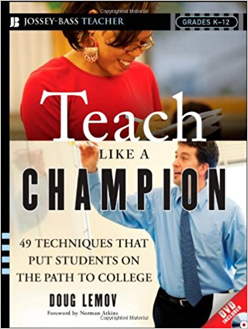2010
 Doug Lemov calls his strategies techniques. He believes that a technique is an action, the more you practice the better you get. “My task has not been to invent the tools but to describe how others use them and what makes them work. This has meant putting the names on the techniques in the interest of helping to create a common vocabulary with which to analyze and discuss the classroom.”
Doug Lemov calls his strategies techniques. He believes that a technique is an action, the more you practice the better you get. “My task has not been to invent the tools but to describe how others use them and what makes them work. This has meant putting the names on the techniques in the interest of helping to create a common vocabulary with which to analyze and discuss the classroom.”
Chapter 2 describes seven techniques. Three of them are; Begin with the End, Shortest Path, and draw the Map.
The technique, ‘Begin with the End’, or as we promote in JSD (JPAS indicator 25), “What will my students understand today?” (page 58), specifically tells students what they should know by the end of the lesson.
The Shortest Path is about taking the shortest path to your goal or in JSD one method is I/We/You. “Use what the data tell you works best, but when in doubt rely on proven direct, trustworthy methods…. criterion is the mastery of the objective and what gets you there best and fastest” (page 65).
Draw the map is about effective planning of student participation during a lesson. This includes the arrangement of student desks, interactions with students during the lesson and positive student participation. In JSD this technique on the JPAS is called Engagement. “It might be that a teacher wants students facing each other only for some lessons…interaction for only a part of a lesson…without structuring the classroom so that some students always have their backs to the teacher” (pages 67-68).
